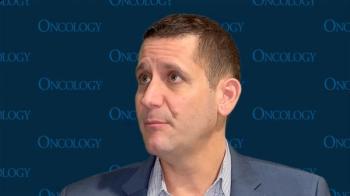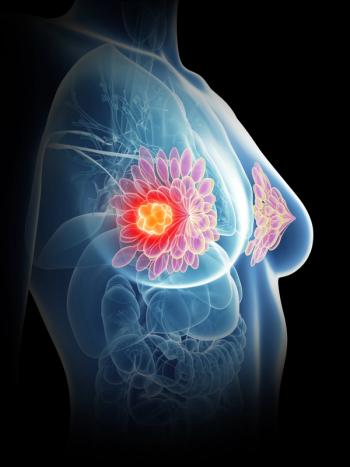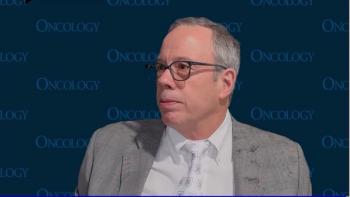
Oncology NEWS International
- Oncology NEWS International Vol 9 No 10
- Volume 9
- Issue 10
Only Slight Improvement in Hepatocellular Carcinoma Survival
SAN DIEGO-Hepatocellular carcinoma (HCC) is increasing in the United States, while survival rates have not improved substantially, Andrew Mason, MD, of the University of New Mexico Health Sciences Center, Albuquerque, said at the annual meeting of the American Gastroenterological Association (AGA), held during the Digestive Disease Week conference.
SAN DIEGOHepatocellular carcinoma (HCC) is increasing in the United States, while survival rates have not improved substantially, Andrew Mason, MD, of the University of New Mexico Health Sciences Center, Albuquerque, said at the annual meeting of the American Gastroenterological Association (AGA), held during the Digestive Disease Week conference.
Dr. Mason and his colleagues published an article in 1999 that looked at the rise in hepatocellular carcinoma. Their new study looks at survival rates.
Using the National Cancer Institutes Surveillance, Epidemiology and End Results (SEER) database, we looked at biopsies confirmed from 1977 to 1996 to see if there was a trend, Dr. Mason said. We found 7,389 patients. Of those, 73% were men, which was to be expected.
The overall median survival for the entire group increased from 0.57 years during 1977 to 1981 to 0.64 years from 1992 to 1996. The overall 1-year survival increased from 14% in the earlier period to 23% in the later period. The 5-year survival rate increased from 2% to 6%.
Dr. Mason noted that survival was similar between men and women, and, in general, there were no significant differences among the various ethnic groups.
He did notice a difference based on treatment. During 1992 to 1996, only 9.1% of hepatocellular carcinoma patients underwent either radical or palliative surgery. This subgroup, he said, had a significantly prolonged survival, compared with those who did not have surgery (median survival, 2.35 years vs 0.60 years).
The 1-year survival rate for those who had surgery was 72%, compared to 18% for those without surgery, and for 5-year survival, the numbers were 42% vs 3%. Similar benefits were seen in the 8.2% of patients who had undergone surgery during 1987 to 1991.
The heart of the matter is that more people diagnosed in the 1990s are surviving longer, but it ultimately levels out, he said. One reason is that there is more early screening. So patients are more likely to be alive in a year, but after 5 years, theres almost total mortality. Even after 1 year, four of five patients are dead.
With more aggressive treatment, patients do live a little longer, but, Dr. Mason noted, with so few people surviving, were making no great headway in treatment. Only a very small number of patients are having surgery, but those who do tend to live longer. ONIn SAN DIEGOHepatocellular carcinoma (HCC) is increasing in the United States, while survival rates have not improved substantially, Andrew Mason, MD, of the University of New Mexico Health Sciences Center, Albuquerque, said at the annual meeting of the American Gastroenterological Association (AGA), held during the Digestive Disease Week conference.
Dr. Mason and his colleagues published an article in 1999 that looked at the rise in hepatocellular carcinoma. Their new study looks at survival rates.
Using the National Cancer Institutes Surveillance, Epidemiology and End Results (SEER) database, we looked at biopsies confirmed from 1977 to 1996 to see if there was a trend, Dr. Mason said. We found 7,389 patients. Of those, 73% were men, which was to be expected.
The overall median survival for the entire group increased from 0.57 years during 1977 to 1981 to 0.64 years from 1992 to 1996. The overall 1-year survival increased from 14% in the earlier period to 23% in the later period. The 5-year survival rate increased from 2% to 6%.
Dr. Mason noted that survival was similar between men and women, and, in general, there were no significant differences among the various ethnic groups.
He did notice a difference based on treatment. During 1992 to 1996, only 9.1% of hepatocellular carcinoma patients underwent either radical or palliative surgery. This subgroup, he said, had a significantly prolonged survival, compared with those who did not have surgery (median survival, 2.35 years vs 0.60 years).
The 1-year survival rate for those who had surgery was 72%, compared to 18% for those without surgery, and for 5-year survival, the numbers were 42% vs 3%. Similar benefits were seen in the 8.2% of patients who had undergone surgery during 1987 to 1991.
The heart of the matter is that more people diagnosed in the 1990s are surviving longer, but it ultimately levels out, he said. One reason is that there is more early screening. So patients are more likely to be alive in a year, but after 5 years, theres almost total mortality. Even after 1 year, four of five patients are dead.
With more aggressive treatment, patients do live a little longer, but, Dr. Mason noted, with so few people surviving, were making no great headway in treatment. Only a very small number of patients are having surgery, but those who do tend to live longer.
Articles in this issue
about 25 years ago
HER-2/neu Activation May Predict Breast Cancer Prognosisabout 25 years ago
Company Offers Computer-Aided Detection of Breast Cancerabout 25 years ago
ASBD, an Interdisciplinary Group, Fights Breast Cancerabout 25 years ago
How Employers Can Help Caregivers in the Workplaceabout 25 years ago
New BRCA1 Mutations Found in Black and Hispanic Womenabout 25 years ago
Study Shows Profile of At-Risk Elderly Lung Cancer Patientsabout 25 years ago
Scientific Studies Support Strategies to Curb Nicotine Addictionabout 25 years ago
Smoking Declines Among High School Males, But Not Femalesabout 25 years ago
Cuts in Medicare Reimbursement for Cancer Drugs on HoldNewsletter
Stay up to date on recent advances in the multidisciplinary approach to cancer.

















































































